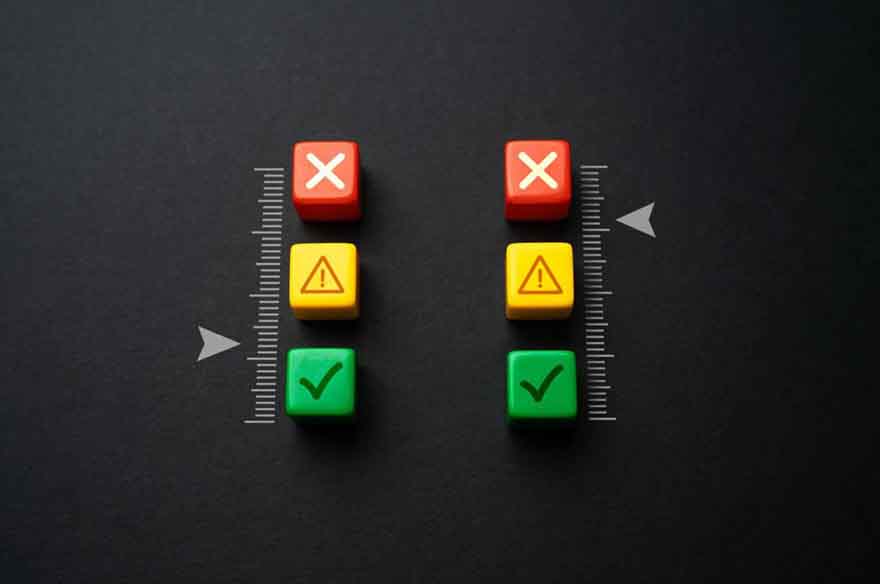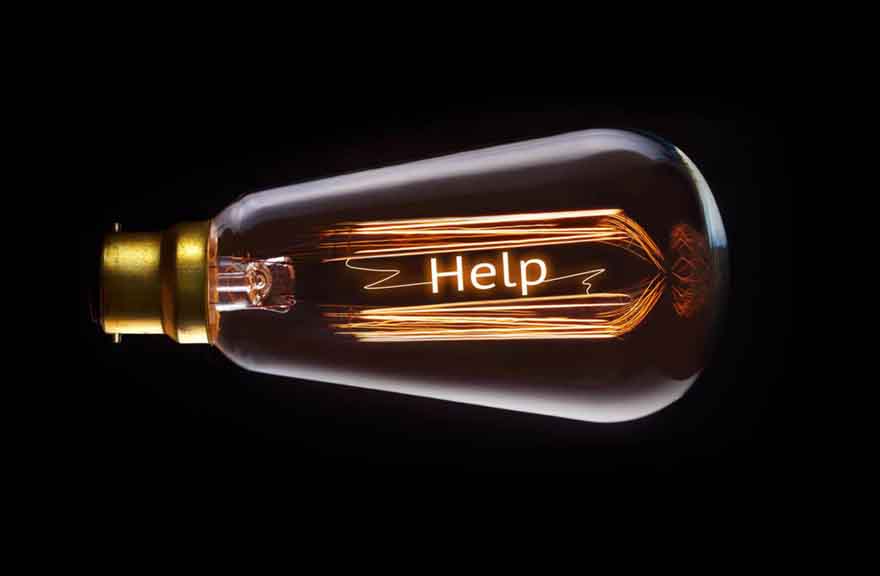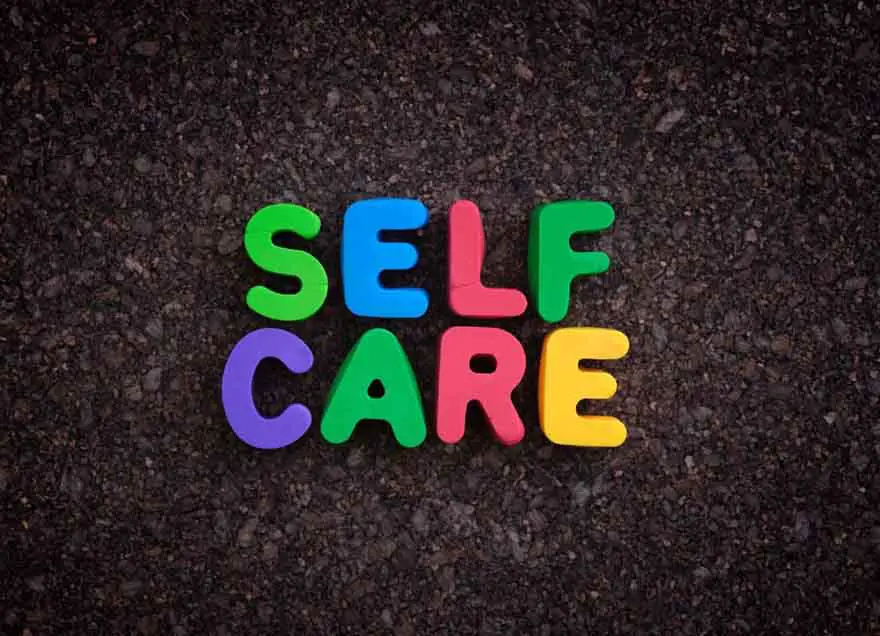Pathological Demand Avoidance (PDA) is a condition that’s considered relatively new to the public. While it’s been coined for a while, it hadn’t really gotten traction as a condition to be aware of by the public until recently. Pathological Demand Avoidance in Adults is a condition marked by a person’s constant avoidance of even the most basic demands, responsibilities, and expectations.

It’s often been brushed off as someone “being lazy”, which isn’t true, as PDA is far more complex than that.
If you want to understand Pathological Demand Avoidance, though, you’ll need to understand the broader, underlying plate in which it rests on: Autism Spectrum Disorder (ASD). There’s a reason why autism is said to be on a spectrum. Living with autism varies from person to person — some have an easier time with their symptoms, while others struggle a great deal. Some show only a few traits, while others tick off every box you can think of. The spectrum does not go left to right, but is instead spread out like a color wheel, and even then, such an analogy for it isn’t perfect; nothing is.
Since the concept was coined in 1911, research of the disorder has been heavily studied, and because of that, we’ve been able to develop more tools to help identify autism and its subsets of conditions, one of them being Pathological Demand Avoidance.
So what exactly is Pathological Demand Avoidance? What are its defining characteristics? How can you tell if someone has PDA, and if so, what are some ways to properly cope with it? Well, I’ll give you the rundown on the most important points to know about Pathological Demand Avoidance in adults and how to go about understanding it.
Classification of PDA

It’s been called multiple names in the past, such as Extreme Demand Avoidance and Demand Avoidance Phenomena.
In fact, autistic individuals have been striving to give PDA a new name entirely, that being “Persistent/Pervasive Drive for Autonomy”.
There’s also debates on just the existence of PDA itself. Clinical experts and academics have argued over whether PDA should be considered an actual subgroup of autism or just a coping mechanism for the troublesome combination of high anxiety, procrastination, ADHD, the social and sensory challenges of autism, and impaired executive functioning.
In this article, I will be treating the condition as its own subgroup of ASD, and I will be referring to it as PDA.
Characteristics of Pathological Demand Avoidance in Adults

Given that PDA is a subgroup of autism, you’re going to find that a lot of adults with PDA display these common symptoms. However, there are some very unique traits that you’re going to see in PDA that makes it very identifiable and stand out from ASD as a whole.
There are some unique aspects you’re going to see in PDA. For example, demands are avoided due to the simple fact that they are demands. One explanation for the behavior is the fact that it’s an expectation, one that leads to a feeling of losing control. This loss of control can lead to increased anxiety and even panic.
The avoidance itself can often seem dramatic, such as making a huge deal out of something that is often considered a small request. An example can be a sudden stomach ache appearing out of nowhere when asked to retrieve an item from across the house.
The ability to comply with demands also varies on a number of factors, such as the time, how the individual is feeling at the moment, and their overall health.
One of the key characteristics that many people should be aware of, however, is that PDA is a lifelong condition. Just like autism itself, PDA is not a “childhood phase” or something you can “grow out of”. Kids with PDA will just become adults with PDA, and while they may have better ways to cope with their symptoms, it’s still there nonetheless.
What is a “Demand”?

So now that we know what the characteristics of Pathological Demand Avoidance in Adults are, what exactly is considered a “demand”? It’s a key part of the name, after all, but not a lot of people really know what a demand is. Most folk see it as a firm command and strict expectation, like you would get from your employer at your job. That’s not the case. In fact, you might be surprised at what is considered demanding.
Here are some key components on what can be considered a “demand”.
- Putting a time requirement, such as showing up to an event at a certain time or getting something done by a certain time. It’s an additional demand on top of the original.
- Questions can be difficult, especially ones that are more confrontational. Something as simple as asking for an opinion can be hard.
- Having a person decide can be disabling. The possibility of future consequences and regret, as well as potentially being judged for it. An example can be deciding where you and your friend should eat for lunch.
- Plans in advance are sometimes daunting. Anxiety tends to build as the date/time for the demands draw nearer. The bigger the plan (such as moving), the worse the anxiety. Just as well, something spur of the moment can lead to anxiety about an uncertain future.
- Bodily demands can be difficult to address, such as hunger or needing to use the restroom.
- Internal feelings are sometimes a problem, too. Having to address anger, sadness, or desires are difficult at times.
- Even praise can trigger anxiety, as it comes with the expectation that you’re going to keep up such acts and behavior. It’s especially daunting if said tasks/behavior are usually out of your comfort zone.
- Uncertainty is one of the biggest driving factors of PDA. Being in control is important to them.
- Breaking from routine is, at times, not easy. It brings uncertainty for the future.
- Expectations, even silent ones, are also dangerous. It might as well be a direct command.
- The energy another person brings to the table. Someone with PDA might feel obligated to match it.
- Suggestions are also considered a demand. They fall under expectations, like “you should brush your teeth”.
- Hobbies themselves are not easy at times. Even the things we love can bring a sense of anxiety.
Avoidant Approaches You Might See

As anxiety scales, so will the extremeness of the avoidance tactics.
For mild anxiety, you’re likely to see things such as excuses, procrastination, and distractions. We’ve all done it before, honestly.
As things scale, you may see some more extreme behavior, such as withdrawing from reality and into fantasy, reduced conversation, and even physical incapacitation.
As panic draws near, you’ll then notice extremes such as trying to take complete control, or just compliance with a later breakdown.
The most extreme reactions come with complete panic. You’re going to see shutdowns, aggression, running away, crying, and even self-harm. These are the worst of the worst, and so the best thing to do is to withdraw the demand completely and try to implement some coping mechanism, which we will get into later.
Just remember that the more a demand is pushed, the more rapidly the anxiety builds.
The Difference Between PDA and Demand Avoidance

If you haven’t heard of PDA or Demand Avoidance, you might be a little confused as to why such a separation exists. After all, aren’t they the same thing, just with an extra word at the beginning? Well, no, not entirely. All people with PDA have some form of demand avoidance, but those with a tendency towards demand avoidance don’t always have PDA. PDA is where demand avoidance escalates to a point where it can be considered “pathological”.
While demand avoidance is closely associated with PDA, I am to look at the broader definition of demand avoidance in order to properly inform others of the difference. Although we are mainly here to discuss PDA itself, I believe it’s important to have an understanding of demand avoidance in general so that you have a better understanding of what PDA is.
What is Demand Avoidance?
Demand avoidance is characterized by an avoidance towards perceived demands.
There are several reasons why someone might develop demand avoidance, and it’s not something that’s all that uncommon. In fact, everyone had experienced demand avoidance at some point. Ever call in sick for work? Write an essay the night before it was due? Put off doing chores in order to engage in another hobby? These are forms of demand avoidance, and you don’t have to be neurodivergent in order to experience it. It’s just part of being human.
When talking about demand avoidance in a broader spectrum and its repeated occurrences, it becomes more common with neurodivergence, especially autism.
Causes of Demand Avoidance
When it comes to demand avoidance, you might just say it’s easier to describe what doesn’t cause demand avoidance. However, you may be surprised to learn that the causes of demand avoidance are actually fairly different (or at least more broad) than PDA.
So, here is a comprehensive list of things that can really cause someone to experience demand avoidance.
- Stress. This shouldn’t be surprising. If you’re stressed out, you’re more likely to avoid things that stress you out even more.
- A need for control. Autonomy is valued a great deal for people who experience constant demand avoidance. We don’t like to feel obligated to do things, especially for other people. We want control of our lives, and sometimes people express it through outright refusal to comply with expectations.
- Getting started. Sometimes the hardest part about the task is just getting started. We look at the task ahead of us and we deem it to be fairly daunting (even if it isn’t), so we put it off as much as possible. For the most part, actually completing the task is simple once you start it, but in the beginning, it can be annoyingly hard to get yourself up to do it.
- Executive functioning. When you’re working on something you genuinely enjoy, it can be pretty easy to get through it. Even tasks you’re not too keen on can be easy to get through. Some of the big hurdles, however, are things that are brand new. The more complex a task, the more daunting it can be. You have to break down how to go about it and can struggle on where to even begin. A good example is cleaning your house. You have to write everything you need to do, get all your supplies ready, split everything up into multiple tasks, and figure out where to start. It’s something we all struggle with in some form or another.
- Fear of wasting time. It’s ironic that avoiding demands can be caused by a fear of wasting time. People can be extremely frugal with their time, and if they don’t find a task worth doing, they won’t do it at all.
- Perfectionism. There are some people who take their work too seriously. Take article writing for an example. Many articles only need a thousand words or so — it’s the perfect length. However, some perfectionists go above and beyond, to an abnormal degree and write thousands of words when it generally isn’t needed. Perfectionists will spend hours on something that should only take twenty minutes, and because of that daunting prospect, it can be hard for them to start a task.
- Sensory issues. Sometimes we don’t want to do something because it can overload us, especially those who have autism. The bright lights in the grocery store can be too bright, or taking the subway to a meetup is too loud, so they won’t go.
- Unpredictable interests. Sometimes, you just don’t feel like it. You want to finish a passion project, but your interest has dimmed and you’d rather do something else.
- ADHD. Those with ADHD will find themselves constantly distracted, which can prevent them from doing a task. Chores can be hard work, and that can be difficult when there’s something more interesting on the TV or internet.
Learning Self-Help

One thing about Pathological Demand Avoidance in adults that stings is the fact that, for the most part, you have to get through it yourself. Parents who understand the symptoms that appear in their child when they’re young are able to discipline their children and raise them to learn how to cope and manage their symptoms. As an adult, you’re more or less expected to deal with it yourself, which isn’t as simple as it may sound. You’ll hear people say “stop procrastinating and just do it”, but they’re not helping.
There are strategies for helping people manage their symptoms and do what they need to. Sometimes it’s all about figuring out what you need and understanding yourself. Perhaps you’re helping a friend understand PDA or learn how to communicate with people with PDA, or maybe you’re the one with the condition. Either way, it’s important to learn these methods, because not only can it seriously help someone with PDA, but it’s also just useful advice for everyday life.
Strategies for Coping with Pathological Demand Avoidance in Adults

If you want to learn how to cope with PDA, no single strategy will help you out. Heck, putting all the strategies into one pot might even make things worse. You need to find out what works best for you by picking some and getting a feel for them. Some of them are fairly necessary, like recognizing demands and your methods of avoidance.
With that, here are some strategies people with PDA use to cope with their symptoms:
- Recognizing demands. One of the essential pieces of self-help with PDA involves recognizing what a demand really is. You’ve already seen the lists I’ve put about what demands look like, as well as what broader demand avoidance is caused by, so you can use that to help understand what triggers your avoidance responses.
- Being aware of your triggers. Triggers is a bit of a buzzword nowadays, but in the realm of psychology, it really is a thing. Triggers are things, actions, ideas, etc. that will elicit a certain response from you. For example: seeing something that reminds you of a bad event in your life, which in turn makes you upset. Easy as that. Recognizing what triggers an avoidance response is an essential part of understanding how to help yourself. Maybe you get nervous when people demand things in a harsh voice, or maybe you feel like a task is daunting because it has multiple pieces. If it makes you want to procrastinate, it’s a trigger.
- Recognize your avoidance methods. People avoid responsibilities in different ways. It’s important to understand how you do it so you can properly stop yourself from engaging with them. I’ve talked about avoidance strategies earlier, so you can take a look at that and see if any ring a bell.
- Identifying, understanding, and accepting your PDA. If you think you or someone you know has PDA, then it’s something you’re going to want to really dig into. It’s not just about understanding it and lining up some of your symptoms, either. I always suggest going to a professional to ask about it, just so there’s no room for denial. In that way, you’ll be able to accept your PDA.
- Learn how to manage, reduce, and disguise demands. Sometimes it’s all about taking a demand and making it less daunting, but it’s not as easy as it sounds. Try doing small demands over a long period of time, like laundry in the morning and dishes in the evening. You can also find ways to knock several demands out at once through efficiency, such as making dinner in large batches so you can have some for later, thus eliminating the need to cook multiple times. Sometimes it’s about keeping your expectations low to lower your anxiety, and other times it’s about rewarding yourself after facing a demand on your own. There’s millions of ways, so you just need to find out what works for you.
- Asking for help. There’s no shame in asking for some help. It can come in the form of asking someone to express a demand in a softer way, or they could be helping with the demand entirely. There’s nothing wrong with asking for accommodations; just make sure these accommodations aren’t a way to outright avoid a task.
- Ask to be held accountable. This one is tricky because it doesn’t work for everyone, but some do find it helpful. Essentially, you need to have someone you rely on come in and check on you to make sure you’ve gotten things done, or to remind you to do a certain thing. You can ask a person, or you can relegate it to an app that can set reminders for you.
- Keep your relaxation things separate from your work things. If you’re trying to get something done, you need to get your distractions out of the way. Put your phone away, turn off the TV, and stay out of bed. You need to stay focused if you’re going to get something done. I often find myself exiting from my work document to check on social media, to the point where it becomes a knee-jerk response to when I get bored. To that, I just turn off the internet or put my phone on airplane mode so I can finally get through it.
- Maintain your relationships. Maintaining relationships itself can be hard if you have PDA, but it can be managed. Being able to keep relationships up is an easy way to get the social support you truly need. One thing I suggest is letting them know that you have trouble with keeping up with obligations. Let them know that if you have trouble keeping in contact, that it’s nothing on them.
- Get therapy. If you find yourself unable to manage your own symptoms, then I highly suggest you go and get a therapist. There’s no shame in doing so, and I find it to be a good way to really understand yourself and your PDA, and like I said before, understanding it is a large part in being able to care for yourself and get things done. It doesn’t have to be a lifelong thing, but I highly suggest a few sessions to understand how you can better manage your symptoms.
Remember Self-Care

Self-care is an essential part to helping you manage your symptoms. The last thing you need is to be too hard on yourself. That will only increase your stress and anxiety, and even if you do get things done, it’s no good for your mental health.
If you find yourself practically pulling your hair out due to the stress of a demand, you need to take a step back. Many things can always be done later or made up for. Yes, cleaning the floors is important, but so is your mental wellbeing. If you need to, take a break. Do something to help you relax. Talk to a friend, or maybe go and get some food.
Just remember that no matter how daunting the task may be, you can get through it. Unless you’re literally tasked to defuse a bomb, there’s nothing wrong with taking a step back and avoiding that task for just a few more moments.